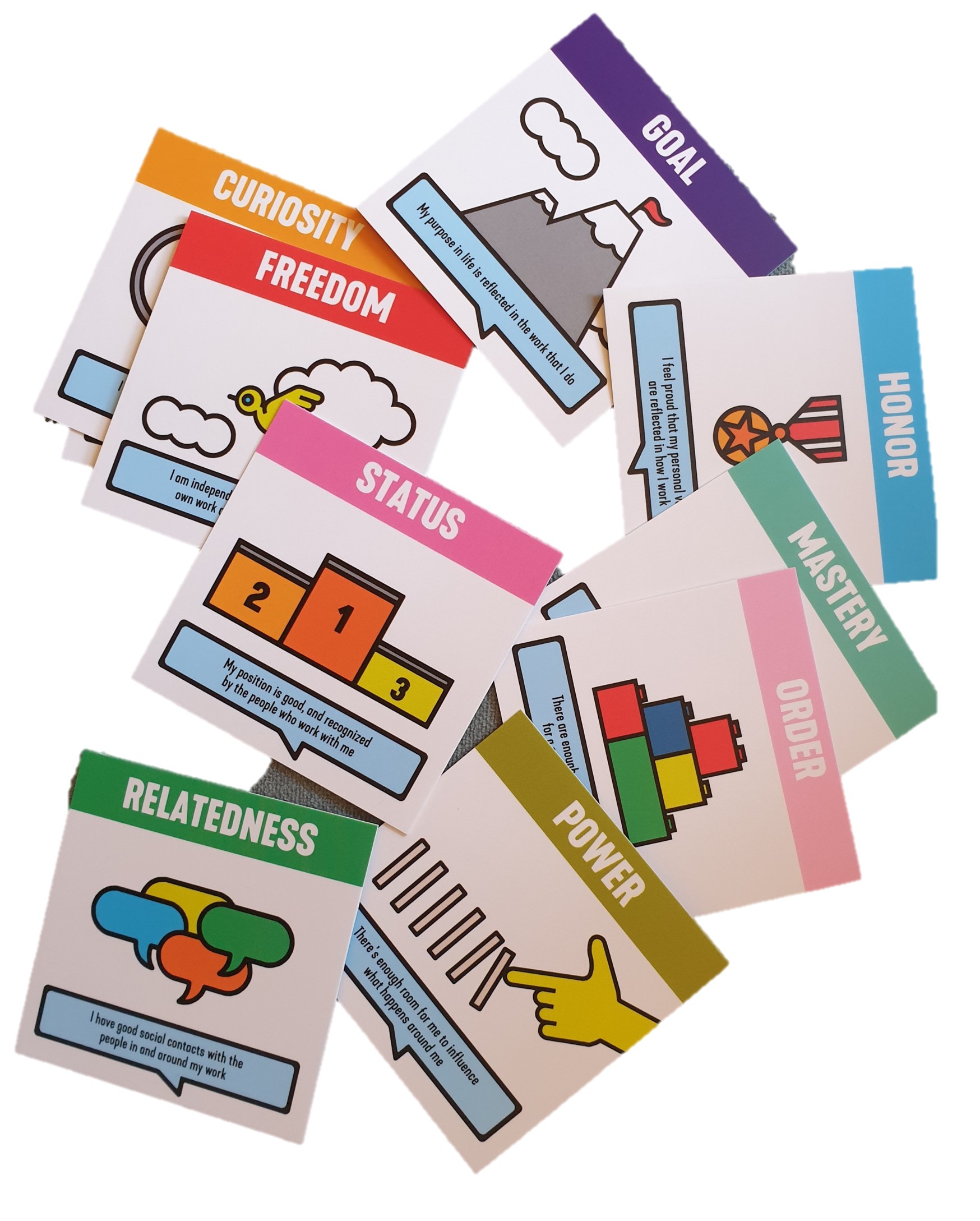Appearance
Moving Motivators
- Subject
- Empower people / Team growing
- Participants
- Agile Coach / Agile Master, the entire agile team
- Facilitator
- Agile Coach / Agile Master

Summary
The "Moving Motivators" exercise is based on ten intrinsic desires and was designed by Jurgen Appelo.
Definition
The game is based on the analysis of employee's motivation and engagement to do certain things. Leaders have the responsibility for making employee engagement a built-in property of the organization. There are two types of motivation: intrinsic and extrinsic.
The intrinsic one is based on engaging in some activity or behavior in search of a reward. People tend to feel fulfillment.
Extrinsic motivation is related to doing actions to get a reward or to not be punished for it. It's not something that we do because we are satisfied or feel good with it. An example for extrinsic motivation is getting a salary, bonus or a promotion. The satisfaction lasts only shortly.
Motivation
Increases a better understanding of what influences intrinsic and extrinsic motivation of the human behavior. It will help to learn how each type works. It will let you know when to propose an external reward or where it is appropriate to switch to the internal side of motivation. This method is also a good way to let people and teams know that their performance is worthy of recognition.
Results
Insight into the team what is sticking the team together and what splits or breaks the team spirit.
Benefit
Both extrinsic motivation and intrinsic motivation drive human behavior. There are several key differences between motivation that comes from external rewards and the kind that is driven by an individual's genuine interest, including the influence of each type on a person's behavior and the situations in which each type will be most effective. It also provides an understanding of how each type of motivation works well and when it has to be used, so that it can help people perform tasks and improve their learning.
Procedure
The facilitator puts all ten motivator cards in a line on the desk. The cards show the following motivators: Curiosity, Honor, Acceptance, Mastery, Power, Freedom, Relatedness, Order, Goal, Status (=> CHAMPFROGS). They can be grouped into the categories 'least important' and 'most important'. Afterwards, the team chooses:
- a topic to discuss
- a change within their organization, which has an impact on the team
- or a problem in their process or team building.

Tools
Desk, "Moving Motivators" Motivator cards
Hints
This method shall not be considered for evaluating the team, it is thought to achieve an understanding among the colleagues and strenghten mutual trust.